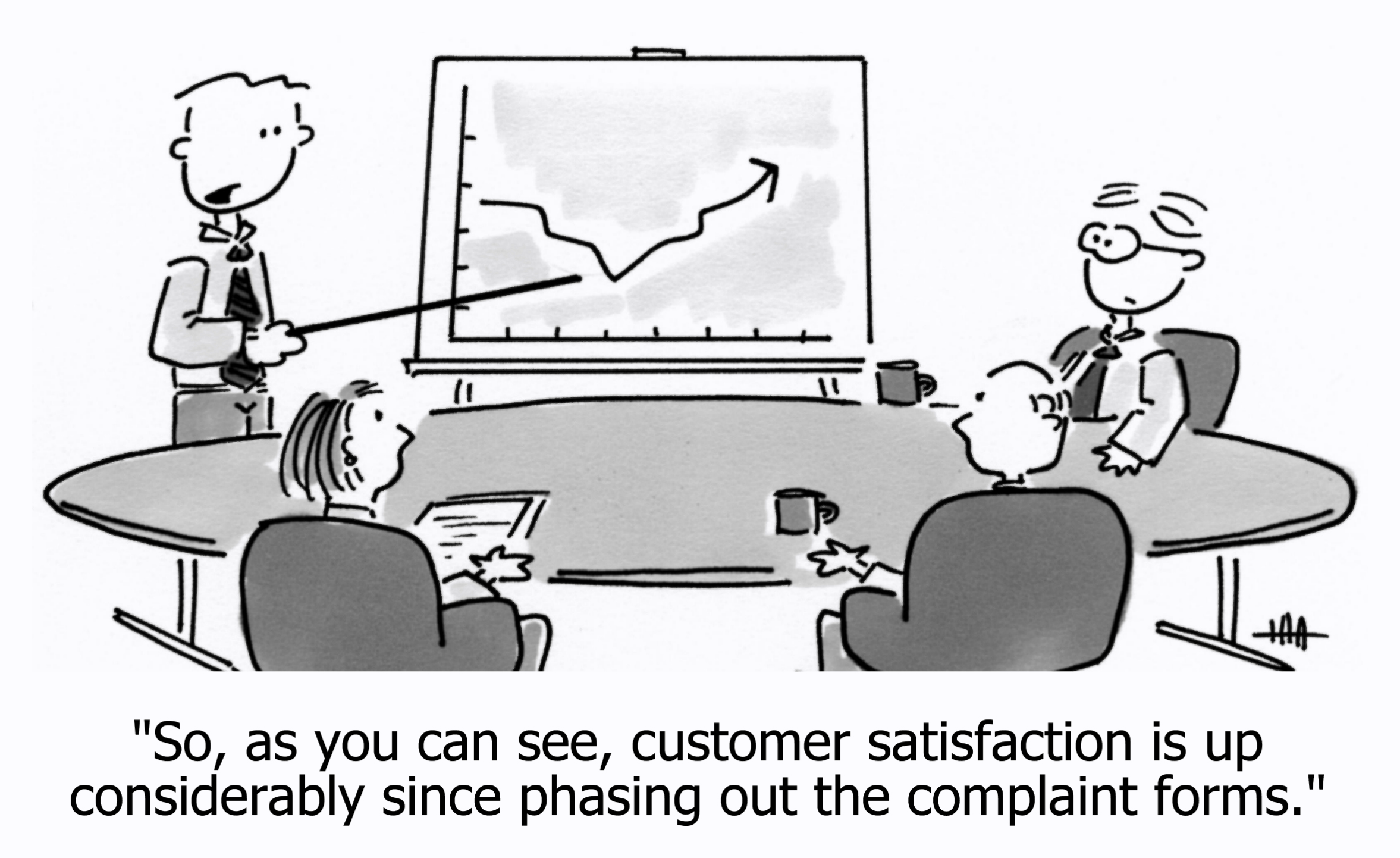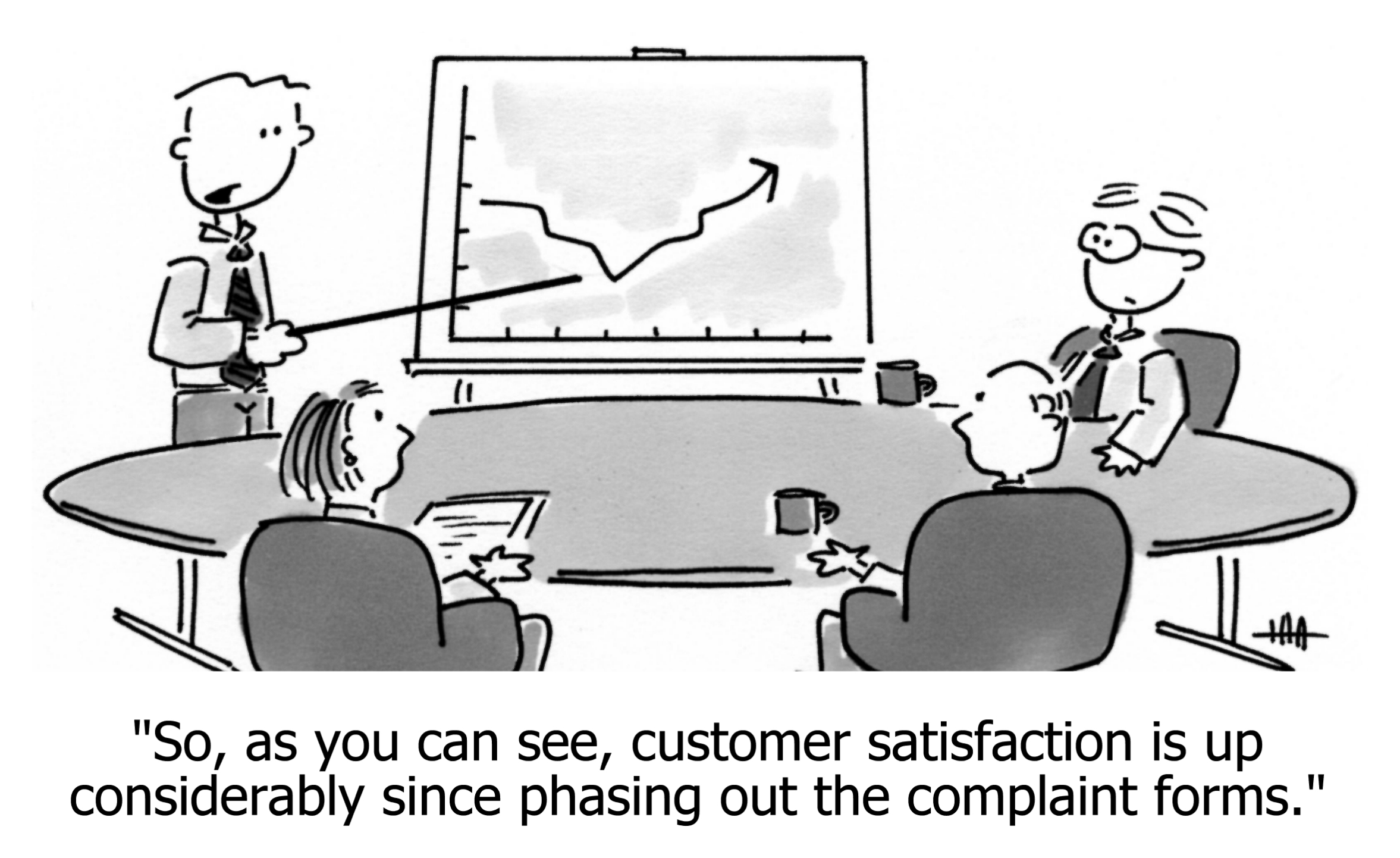Discover what’s blocking sales with less than a day of work
Last week I beat you up about why the number one way to increase revenue is by getting feedback from lost sales. Feedback from the field—not adding new features, not polishing the website, not even talking to existing customers.
That’s right, talking to existing customers isn’t good enough! They bought in spite of your faults; you need to talk to the other 99.9% of your potential customers who aren’t so forgiving and understanding.
But how?
It’s unfair of me to say “find out what’s stopping sales” and then not tell you how to go about it.
So here are eleven ways to collect empirical data about why people are checking out your product but not buying it, most of which can be implemented in less than a day.
1. Add a short, optional form before your download/eBook/whitepaper so you can follow up.
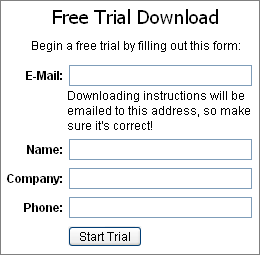
“But forms are a barrier to downloads,” I hear you cry.
I know this argument, but if you don’t have feedback you can’t fix your product, and if a hundred people download in silence and don’t buy, it doesn’t matter that they downloaded.
Besides, if you do it right, adding the form doesn’t necessarily mean fewer downloads. I didn’t used to believe that sentence I just wrote until we did it at Smart Bear. Sure enough, no impact in the number of downloads. None.
So how do you “do it right?” I wrote a nice, long article with specific tips, learned by experimenting in the field, that you can put to use in less than a day. Read it here on the Avangate blog.
Getting email addresses means you can follow up about the trial. Half of them will have forgotten to start the trial. Half will have gotten stuck and silently stopped. Half don’t realize you’re a friendly, happy, small company that wants to spend time making them successful. (That’s a lot of halves…)
For those who end up not buying, if you ask them “why” you’ll be surprised how many will tell you. How can you afford not to know this information?
2. Have an opt-in newsletter.

You don’t have a newsletter and you don’t have time to write one. You don’t even know what to put in one.
I know, and I don’t care! Prompt them anyway, because someday you’ll want one, and then you’ll have a bunch of email addresses.
There’s no reason not to build an honest, opt-in, no-spam list of people who are interested in your product. My experience is that most people on such lists aren’t paying customers! So this means you get all sorts of excuses to gently ping interested people who haven’t given you money. Such as:
- Praise the features in a new software release.
- Give a tip about a feature they might not know about.
- Tell a customer success story.
- Highlight a nice article someone wrote about you or which argues that a service like yours is valuable.
- Announce a partnership with another vendor they might use.
- Give them a time-limited coupon.
- Tell them you’ll be in their city and ask if they’d like you swing by and do a demo.
If you don’t accumulate these emails, it’s a tremendous waste, for nothing. Add the checkbox.
3. Offer free stuff for feedback from lost sales.
Hunt down the contact info for people who trialed but didn’t buy and give them something for free if they’ll talk to you for 15 minutes about why they didn’t buy.
(Guess this means you’ll have to get their email address, huh?)
At Smart Bear we gave $2010 to Wikipedia, $5 at a time. It was amazingly successful.

credit
What can you give away?
- Cool stuff that promotes something good for the world (e.g. something from Etsy)
- Give money to charity so you can write it off and the other person feels good (e.g. $25 donation to Kiva or Wikimedia Foundation or Free Software Foundation)
- $25 coupon to Amazon (it’s easy and “Amazon” means “anything you want”)
- Swag with funny/cool content promoting your company (T-shirt, mug, mousepad)
- Cool stuff having nothing to do with your company but which is desirable to your audience (e.g. calendar of XKCD cartoons or Despair posters)
It’s worth $25 at least; probably $50. You don’t have to offer it forever, just until you start hearing the same things over and over again. Or budget $1000 and run the offer until the budget is gone.
4. Hunt down the contact info for one customer and get them on the phone.
I know, it’s an “existing customer,” and I just told you they can’t tell you why other people aren’t buying. But I want you to ask about their buying experience.
Well, of course you should also do a full customer discovery session, and in fact that’s the excuse you can use for the call. But carve out at least 15 minutes to interview them about the trial and buying process.
Ask them things like:
- How did they hear about you?
(Tells you which marketing sources are worth spending more time/money with) - What information on your website convinced them to download?
(Tells you which messages are important; if they’re buried, make it more obvious; incorporate into ads) - What was the main reason they bought the software?
(Tells you their primary pain point, the one you should address on your home page and ads) - What part of the trial process was confusing or difficult?
(Tells you where other people are probably dropping out of the sales process)
5. In your product uninstaller, ask why they didn’t buy.
This sounds dubious I know. Why would anyone bother? They’re already uninstalling, why would they give you the time of day?
But the fact is, this works. People like to give opinions. Don’t take my word for it—check out this comment on last week’s post where Mo Flanagan from WindowTabs volunteered that this technique was “eye-opening” for his company.
The FireFox browser not only asks when you uninstall, it even asks if you merely cancel an install!
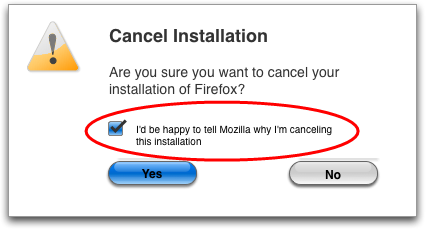
Sure, most of the time you’ll get nothing and sometimes you’ll get useless crap like “You suck,” but sometimes you’ll get gold.
As with the Help Menu link (below), don’t bother making a custom form to get the feedback, just pop up an email client or web browser with a form asking why they didn’t buy.
While you’re at it, why not add a field that says: “If you’d like to be notified when we address the problems you’ve raised, put your email address here.”
6. Solicit testimonials from existing customers.
Besides being great marketing fodder, testimonials are where you discover the real reasons your customers love you. The real pain you solve, the true impact of your software on their daily life, whether you really do have “legendary” service, etc..
For the things they highlight, consider: Are those things obvious from the get-go to new visitors to your website? Are these things obvious while someone is trialing your product?
For the things you thought were great about your product or company that they don’t talk about, maybe you should reconsider whether those things are actually important. Listen to your customers’ point of view, not yours. Listen to their stories, not your vision.
Here’s an example. This is an actual customer quote for Smart Bear’s (my) software development tool:
“When we introduced Code Collaborator, it was like someone broke the ice in our group. With some common ground to start conversations and help us get to know each other, we came out of our cubes and actually talked to each other. As a result, now we collaborate more often to design and test features as well as review them.”
—Anand Kalyanavarathan, Program Manager, Siemens
Notice how there’s no mention of features or why we’re better than the competition or whether we’re SaaS or not. It’s a story about how this tool changed the social dynamic in the company from isolation to collaboration.
You can see this sentiment reflected in the bi-line on Code Collaborator’s product page (circa 2009 when this article was written): “When code review is easy and fun, it actually gets done.”
7. Add links (for web apps) and Help Menu items (for desktop apps) soliciting feedback. Or ask on “quit.”
It should say something inviting and human like “Complain” or “Yell at us.” Just “Feedback” is too corporate and unfeeling. Prove that you want them to click that link!
You don’t have to create complex forms or mess with proxy servers, just open a “Contact Us” form on your website or launch their email client.
We did this at Smart Bear and a sizable percentage of all feedback email comes from that link in the product. You can probably add this to your software in an hour. Why not do it?
Keith from Redcort software suggests also prompting users when they exit the product. Would that bother a user? During a trial, this is no different from any other “annoyance” buy-me-now box, but has much greater opportunity for reward.
8. Give away free copies of your software in exchange for product reviews.
Reviews not only give you feedback about your software, they also double as publicity.
Don’t worry about getting bad publicity. If your product is DOA they won’t bother writing a review, because writing “I couldn’t get it installed” doesn’t make for an interesting article. If they like some parts and dislike others, that’s OK. In fact, there’s data that shows people are more likely to try a product that has mixed reviews that one with rave reviews, provided the reviewer gives details!
The smaller the blogger the more likely they are to help you. Remember, even a blogger with 17 RSS subscribers can provide valuable feedback.
9. Give away copies of your software in exchange for a 30-minute feedback session.
After the trial period elapses, almost no one buys, right? So you send some emails to beg them etc., but almost no one responds, right?
So you have these people who were interested enough to download but absolutely are not going to buy. I propose you give them the software for free.
You’re not losing money on the sale because they weren’t going to buy anyway. You exchange the free license only if they get on the phone with you and really talk about why they couldn’t shake the money loose from the boss.
The only way you “lose money” here is that you have to provide tech support without revenue. But the feedback about lost sales is more than worth it.
Besides, those people will tell their friends (free publicity), and you can set limits like “only one free seat per company” so that they can’t pull this trick on you twice.
Also you don’t have to offer this forever. By the time they tell their friends and suggest that if they wait they could get a free seat, you’ll have ended this program because you’ll have gotten 10 meetings and you’ll know how to get those friends to actually purchase.
10. Find a local startup/entrepreneur/user group in town and pitch your product.
Most cities have an informal support group for startups. Ask whether you can pitch your product to the group for practice and feedback.
It doesn’t matter if you’re pitching in front of entrepreneurs, investors, or a local user group. In fact, the latter is great if they’re also your potential customers—you get to do a sales pitch in a friendly environment.
Even if you don’t get great feedback, having to do a presentation forces you to rethink what’s important and interesting about your software and how to communicate that to others. Frequently this exercise reshuffles some ideas that end up on your home page and advertisements.
11. Use UserVoice or GetSatisfacion
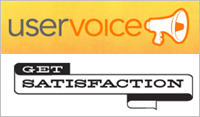
These web-based services solicit feedback and then allow people to vote on each other’s ideas. The cost is free or cheap depending on service options. Both of these services are ubiquitous on the web so people generally know how to use them.
I recommend allowing anonymous responses, otherwise many people will be discouraged by having to create a new account or forgetting the account information they created.
Don’t worry about people crapping up your forums. You won’t have much feedback at first so moderation is easy, and in my experience at Smart Bear we’ve had hundreds of entries and comments and thousands of votes, and we haven’t once needed to delete something.
Please, just do something
If you’re not actively getting data about lost sales every day, you’re in the dark. These techniques are easy to implement so there’s no excuse not to try some.
If you still think you “already know what they’re going to say,” try it anyway. If you’re right, hooray for you.
But if you’re wrong, these techniques could be the difference between molding a product people will actually pay money for and going out of business with an idea you thought was perfect.
https://longform.asmartbear.com/more-sales-customer-feedback/
© 2007-2025 Jason Cohen
 @asmartbear
@asmartbear